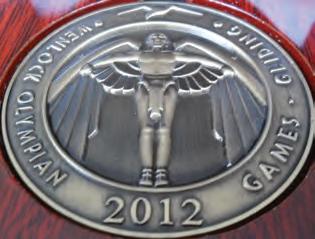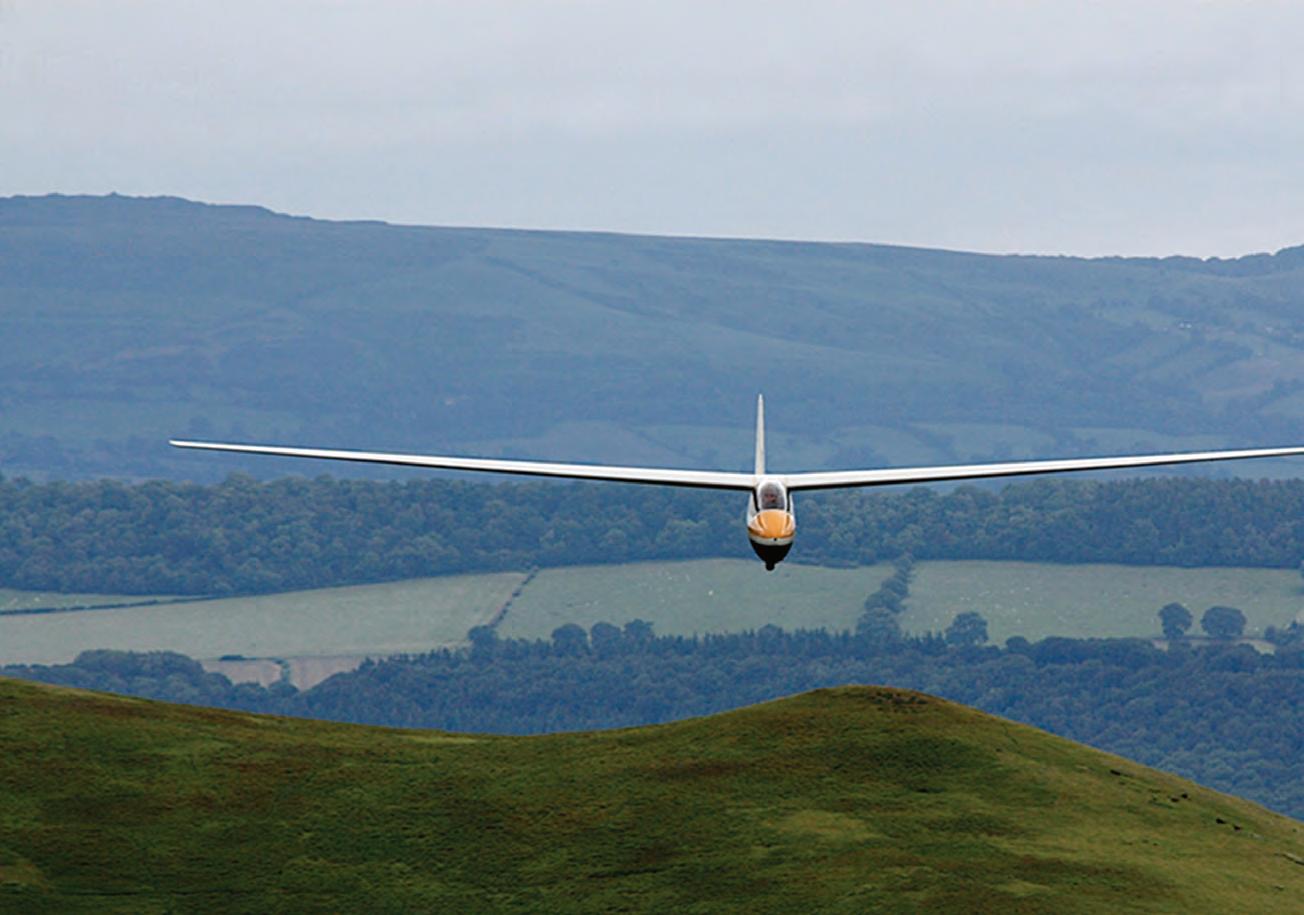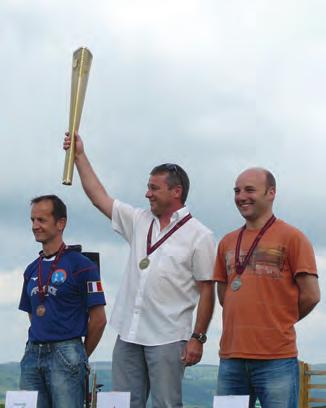
3 minute read
Vintage T he Wenlock Olympian Games
from SoaringNZ Issue 31
by mccawmedia

THE WENLOCK
Advertisement

OLYMPIAN GAMES By Bruce Stephenson (Event organiser)
Ka6 grid lineup.


Mick Wells EoN Olympia.
Vincent Cockett Photo
Irene van der Zwan's Ka6. Just a small selection of the stunning models present. Photo Jon Hall.JPG

The small town of Much Wenlock in Shropshire, England (which has a historic link to the modern Olympic games) has hosted an Olympian Glider Competition. Much Wenlock hosted a precursor to the modern Olympic Games in the 19th Century. One of the mascots of the recent London Olympics was named Wenlock in the town’s honour. Gliding was an offi cial demonstration sport at the 1936 Olympic Games in Berlin.


Firmin Henrard Belgium receives best restored Olympia award.
Stuart Naylor Photo

Ka6 Winners.

Gold medal Switzerland, Silver England, Bronze France.

French Nord as flown by Carl Adissou.
Olivier Guitton Photo

The great Wally Kahn presents Bernard Gabolde his medellion.
Olympia gliders were originally designed for the 1940 Olympics at Helsinki, where gliding was to be a full sport, however war intervened and the Olympics were cancelled. Whilst gliding’s Olympic debut was short lived, the Olympia gliders went on to become extremely popular among gliding clubs around the world after the war. “The relatively simple design called for a wooden structure, making it suitable for fl ying clubs to build themselves. This, coupled with its good fl ying characteristics and performance, and easy handling on the ground, was a major reason for the glider’s popularity and widespread use in the post-war years.” Deutsches Museum.
The Midland Gliding Club teamed up with the Vintage Glider Club to host the fi rst Wenlock Olympian Games Gliding Competition, featuring gliders harking back to an age when gliding was briefl y an Olympic sport.
The Midland Gliding Club, based at their airfi eld on the Long Mynd, was proud to host the Competition, which ended on Saturday 21st July. A fi eld of more than 50 pilots from seven countries converged on the Long Mynd for a week of tasks involving best distance fl own and the fastest time over a set course, typically at around 100Kms.
The week opened with aerobatic gliding displays, which delighted spectators. The pilot was German aerobatic pilot Christoph Zahn, who was fl ying a replica of the Habicht glider which made its public debut at the 1936 Berlin Olympics.
Shortly after the display, many of the gliding competitors appeared overhead the airfi eld for their fi rst race of the week, as they made their way to their turning point of one of Shropshire’s most famous landmarks, the Iron Bridge. For the following two hours, the skies above Much Wenlock were a gliding arena.
With sponsorship from EBLEX, the organisation for the English Beef and Sheep Marketing Board, two classes of gliders were racing. One class was made up of Olympia gliders, which were developed as the fi rst Olympic mono-class glider for the 1940 Games, whilst the more modern successor to the Olympia, the Ka6 was the basis for the second class.
Despite the promising start on the Sunday, the weather prevented tasks being set on Monday through to Wednesday. With racing resuming on Thursday and Friday, the eventual winners of the Gold medals were Bruno Wettstein from Switzerland in the Olympia class and Adrian Emck from Great Britain in the Ka6 class.
Supported by the British Gliding Association, among the VIP’s attending the medals ceremony was Max Bishop, Vice President of the International World Games Association, who said: “Gliding has a great future in multi sports events and Wenlock has shown the way forward.”
After the medals ceremony, the airfi eld opened with model fl ying and a unique line-up of gliders that charted the history of gliding, by the Vintage Glider Club. MGC Chairman and Competition Director, Jon Hall, said that the week had been a fantastic success which he hoped would inspire more people to take up the sport.










